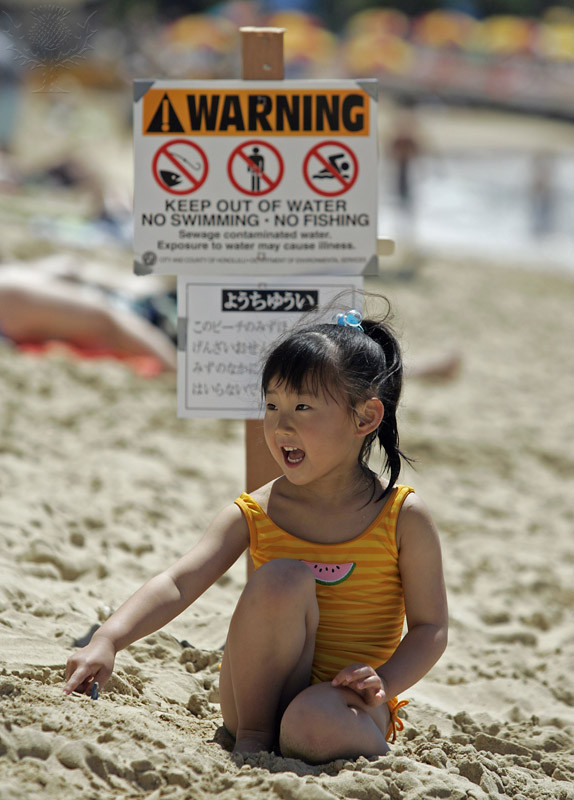Sewage Spills Mar Oahu Beaches


This hurricane season, nearly 500,000 gallons of raw or untreated sewage has leaked into the waters off Waikiki, Kailua, Kaneohe, Waimanalo, Sand Island, and the Ala Wai Canal. The chaos that these sewage spills caused has landed Honolulu in the national news, mainly due to the fact that one spill led to closure of world famous Waikiki beach. Huffington Post, CNN, and ABC News, are just a few of the news agencies that put Honolulu’s sewage problem under the spotlight.
One way to make sense of the chaos is to understand the causes and effects of sewage spills. With the 2100 miles of pipeline underground in Oahu, it’s hard to keep every inch of those pipelines perfectly intact. As heavy rain floods the island, rain water seeps into the cracks of the pipes, causing them to overflow and backup the sewage system.
Although 500,000 gallons seems like an astoundingly large number for a sewage spill, it’s not very surprising considering the amount of wastewater that the island collects on a daily basis. On average, Oahu collects 100 million gallons of wastewater every day. From toilets, sinks, and drains across the island, wastewater makes it way to 70 pump stations on Oahu. From there, the water gets distributed to treatment plants where debris and solids are removed. Then, the water is finally treated for safe disposal into the land, or for agricultural uses such as watering a field.
Sewage spills are not to be taken lightly. Besides the major inconvenience it causes, sewage spills also pose as a major health risk to people and wildlife. Alongside sewage spills, excessive run off caused by flash floods lead to brown water advisories for coastal waters. Exposure to brown water and raw sewage means exposure to bacteria, viruses, fungi, and parasites that can cause life-threatening diseases and infections. Avid surfer, senior Kainani Gruspe says, “All last week, I couldn’t surf at Waikiki because my friends told me that when they went surfing, they could feel a film over them and their eyes were stinging. So I just avoided the water.” Gruspe had to drive all the way to the North Shore to find clean water to surf in.
Paddlers also feel the effects of brown water advisories and sewage spills. “Since we practice in the Ala Wai or at Sand Island, sewage spills make it unsafe and unpleasant for us to paddle in those waters. It disrupts our training and makes paddling less enjoyable,” says senior Ai Yokogawa, who paddles for Healani Canoe Club.
According to a KHON2 news article, city and private infrastructures are being called out for their lack of preparedness during approaching storms. There were several pump stations around the island that were reported to be inactive when they should have been ready to function during the recent rain storms. As more storms are expected, officials are cracking down on pump stations by monitoring their performance through a control center at the Sand Island Wastewater Treatment Facility. The control center can identify broken pumps right away so that repair crews can take action. City officials are also pushing for construction projects that affect the performance of wastewater pumps to wrap up within a reasonable time. Deadlines have been issued to construction companies in attempt to get as many pipelines and wastewater pumps ready for the heavy rains that are still expected for the islands.
